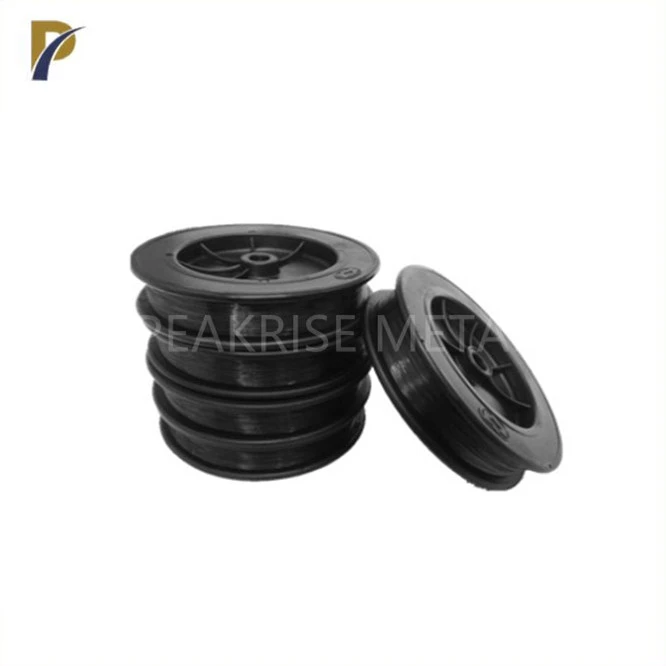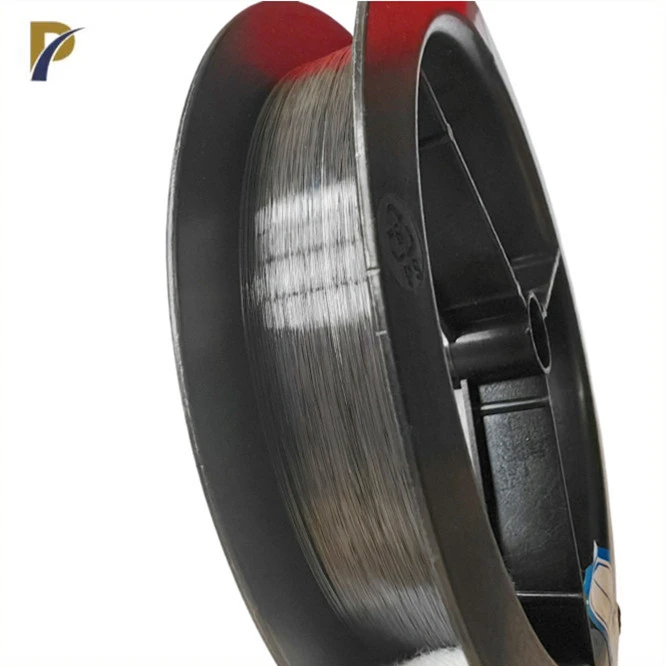Comparative Analysis of Molybdenum and Brass Wire Properties
Physical Characteristics
Molybdenum wire boasts exceptional physical properties that set it apart in EDM applications. Its high melting point of 2620°C allows it to maintain structural integrity under extreme temperatures, surpassing brass wire's melting point of approximately 900-940°C. This temperature resistance enables molybdenum cutting wire to perform consistently during prolonged EDM operations, reducing the need for frequent wire changes and minimizing production downtime.
Mechanical Strength
The tensile strength of molybdenum wire ranges from 900-1000 MPa, significantly higher than that of brass wire, which typically falls between 400-600 MPa. This superior strength allows molybdenum wire to withstand higher tensions during the cutting process, resulting in straighter cuts and improved dimensional accuracy. The robust nature of molybdenum wire also translates to fewer wire breakages, enhancing overall operational efficiency.
Electrical Conductivity
While brass is known for its good electrical conductivity, molybdenum wire exhibits even better performance in this aspect. With an electrical conductivity of 19.7 MS/m, molybdenum ensures efficient energy transfer during the EDM process. This enhanced conductivity contributes to faster cutting speeds and more precise spark generation, ultimately leading to improved surface finishes and tighter tolerances in the machined parts.
Performance Comparison in EDM Applications
Cutting Speed and Precision
Molybdenum cutting wire generally achieves higher cutting speeds compared to brass wire, particularly when working with hard materials or thick workpieces. The superior strength and conductivity of molybdenum allow for more aggressive cutting parameters without compromising precision. This results in reduced machining times and increased productivity, especially in high-volume production environments where efficiency is paramount.
Surface Finish Quality
The use of molybdenum wire in EDM cutting often yields superior surface finishes compared to brass wire. The consistent performance of molybdenum at high temperatures and its resistance to wear contribute to more uniform spark generation throughout the cutting process. This uniformity translates to smoother surfaces with fewer imperfections, reducing the need for secondary finishing operations and improving overall part quality.
 |
 |
Wear Resistance and Longevity
Molybdenum wire exhibits exceptional wear resistance, maintaining its diameter and integrity over extended cutting periods. This characteristic is particularly advantageous when machining abrasive materials or performing long, uninterrupted cuts. In contrast, brass wire tends to wear more quickly, potentially leading to dimensional inaccuracies and increased wire consumption. The longevity of molybdenum wire can result in cost savings over time, despite its higher initial price point.
Cost-Benefit Analysis and Application Considerations
Initial Investment vs. Long-term Value
While molybdenum cutting wire commands a higher upfront cost compared to brass wire, its superior performance and longevity often justify the investment. The reduced frequency of wire changes, decreased machine downtime, and improved part quality contribute to overall cost savings in the long run. For high-precision applications or when working with challenging materials, the benefits of molybdenum wire typically outweigh the initial price difference.
Material Compatibility
Molybdenum wire excels in cutting a wide range of materials, including hardened steels, titanium alloys, and other high-strength metals. Its ability to maintain performance under extreme conditions makes it particularly suitable for aerospace, medical, and advanced manufacturing applications. Brass wire, while versatile, may struggle with some of these demanding materials, potentially limiting its applicability in certain industries.
Environmental Considerations
From an environmental perspective, molybdenum wire offers some advantages over brass wire. The longer lifespan of molybdenum wire results in less frequent replacements, reducing overall material consumption and waste. Additionally, molybdenum is fully recyclable, aligning with sustainable manufacturing practices. However, it's important to note that proper disposal and recycling processes should be implemented for both materials to minimize environmental impact.
Conclusion
In the realm of EDM cutting, molybdenum wire emerges as the superior choice for most high-precision applications. Its exceptional physical properties, including high tensile strength, temperature resistance, and electrical conductivity, contribute to improved cutting performance, better surface finishes, and increased operational efficiency. While brass wire remains a viable option for less demanding tasks or budget-conscious projects, the long-term benefits of molybdenum wire often outweigh its higher initial cost. As EDM technology continues to advance, the role of molybdenum cutting wire in achieving precision and quality in manufacturing processes is likely to grow even more significant.
FAQs
Can molybdenum wire be used for all EDM cutting applications?
While molybdenum wire is versatile, it may not be necessary for all EDM cutting tasks. It excels in high-precision cutting, especially with hard materials or complex geometries. For simpler cuts or softer materials, brass wire might be sufficient.
How does the cost of molybdenum wire compare to brass wire in the long run?
Although molybdenum wire has a higher initial cost, its longevity and performance often result in cost savings over time due to reduced wire consumption, fewer machine stoppages, and improved part quality.
Is special equipment required to use molybdenum cutting wire?
Most modern EDM machines can accommodate molybdenum wire without significant modifications. However, it's essential to ensure your machine's settings are optimized for molybdenum wire to achieve the best results.
Experience Premium Molybdenum Cutting Wire | Peakrise Metal
At Shaanxi Peakrise Metal Co., Ltd., we specialize in manufacturing high-quality molybdenum cutting wire for EDM applications. As a leading molybdenum wire factory and manufacturer, we leverage advanced production techniques and rigorous quality control to deliver products that meet the most demanding industry standards. Our commitment to innovation and customer satisfaction sets us apart in the global market. Experience the Peakrise difference in your EDM operations. For inquiries or custom orders, contact us at info@peakrisemetal.com.
References
Rajurkar, K. P., Levy, G., Malshe, A., Sundaram, M. M., McGeough, J., Hu, D., Resnick, R., & DeSilva, A. (2013). Micro and nano machining by electro-physical and chemical processes. CIRP Annals, 62(2), 695–718.
Ho, K. H., & Newman, S. T. (2003). State of the art electrical discharge machining (EDM). International Journal of Machine Tools and Manufacture, 43(13), 1287–1300.
Puertas, I., Luis, C. J., & Álvarez, L. (2004). Analysis of the influence of EDM parameters on surface quality, MRR and EW of WC–Co. Journal of Materials Processing Technology, 153–154, 1026–1032.
Kumar, A., Maheshwari, S., & Sharma, C. (2010). Investigating surface integrity of tool steel after electrical discharge machining with different electrodes. Materials and Manufacturing Processes, 25(10), 1181–1191.
Konig, W., Dauw, D. F., Levy, G., & Panten, U. (1988). EDM—Future steps towards the machining of ceramics. CIRP Annals, 37(2), 623–631.
Jeswani, M. L. (1979). Dimensional analysis of wire-cut EDM for machining hard materials. Wear, 55(1), 153–162.
